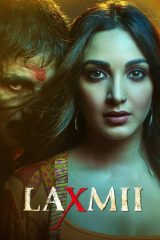Desi Cinema: A Cinematic Celebration of South Asia’s Culture, Creativity, and Complexity

Strong 8k brings an ultra-HD IPTV experience to your living room and your pocket.
Cinema has a unique ability to capture the essence of a culture, and there is no better example of this than Desi Cinema. With its rich history, colorful aesthetics, and diverse stories, Desi Cinema stands as one of the most influential and vibrant film industries in the world. From the extravagant musicals of Bollywood to the thought-provoking independent films of Pakistan, desicinema offers a treasure trove of films that explore universal themes through the lens of South Asian cultures.
Whether you’re familiar with its many genres or just beginning to explore, Desi Cinema has a lot to offer in terms of storytelling, music, and a deep connection to the cultural identities of the Indian subcontinent.
Understanding Desi Cinema: A World of Diversity
Desi Cinema refers to films made in South Asia, which includes countries like India, Pakistan, Bangladesh, Sri Lanka, and Nepal. While most people around the world may associate Desi Cinema with Bollywood, the Hindi-language film industry based in Mumbai, it’s essential to recognize that South Asia’s film landscape is far more diverse. Each region within South Asia has its own film industry, including Tamil (Kollywood), Telugu (Tollywood), Bengali, Urdu, and Malayalam cinemas, all producing films with distinctive styles, stories, and cultural nuances.
The word "Desi" itself is derived from the Hindi/Urdu word desh, meaning "country" or "land," and signifies the collective cultures of the Indian subcontinent. Hence, Desi Cinema is an umbrella term that encompasses a wide range of films, from mainstream Bollywood blockbusters to independent films made in regional languages like Tamil, Kannada, Bengali, or even Pashto.
The Evolution of Desi Cinema
The origins of Desi Cinema date back to the early 1900s, with the first feature-length film in India, Raja Harishchandra (1913), directed by Dadasaheb Phalke. It was a simple mythological tale, but it marked the beginning of a tradition that would evolve over a century. Early Indian films were heavily influenced by theater, with melodramatic performances and operatic music. The films of the 1940s and 1950s, such as those by director Guru Dutt, set the stage for a new era in which film became a powerful medium for social commentary, while also exploring emotions like love, heartbreak, and existentialism.
In the 1960s and 1970s, Bollywood reached its height with larger-than-life films featuring iconic stars like Rajesh Khanna, Dev Anand, and Amitabh Bachchan. This era saw the rise of the quintessential Bollywood hero—bold, brave, and often involved in high-stakes action sequences. Films like Sholay (1975), Deewaar (1975), and Zanjeer (1973) blended action, melodrama, and romance, creating a unique cinematic experience that resonated with audiences across India and beyond.
In the 1980s and 1990s, Bollywood's escapist fantasies—characterized by vibrant song-and-dance sequences, melodramatic plots, and themes of family and love—dominated the global Desi film scene. Directors like Yash Chopra and Karan Johar redefined Bollywood romance with iconic films like Dilwale Dulhania Le Jayenge (1995) and Kabhi Khushi Kabhie Gham (2001), which found international success and a loyal fan base abroad.
Whether it’s the dramatic lip-syncing of romantic ballads in Bollywood or the traditional classical dance performances in regional cinemas, music is an integral part of the cinematic experience in South Asia.
The Music and Dance of Desi Cinema
In Bollywood, music is not just an accessory; it’s a central element of storytelling. Songs are often used to express emotions, advance the narrative, or depict the cultural landscape of a film. A Bollywood film without its iconic songs and dances would be incomplete. These sequences—often elaborately choreographed and set in stunning locations—have made Bollywood a global brand. From the exuberant dance number “Jai Ho” in Slumdog Millionaire (2008) to the melancholic Tum Hi Ho in Aashiqui 2 (2013), the melodies of desicinemas films create lasting emotional connections.
In regional cinemas, music also plays a significant role but in a slightly different way. For example, Tamil cinema often blends classical music and folk elements into the storytelling. The work of music composers like Ilaiyaraaja and A.R. Rahman has been instrumental in shaping the soundscape of Indian cinema, especially with the rise of a more experimental approach to film scores.
Regional Cinemas: A Glimpse into South Asia’s Diverse Voices
While Bollywood gets much of the attention, it’s crucial to explore the regional film industries of South Asia, each with its own identity and cinematic tradition.
1. Tamil Cinema (Kollywood):
Known for its larger-than-life heroes, explosive action sequences, and powerful dramas, Tamil cinema has produced several internationally acclaimed films. Directors like Mani Ratnam and filmmakers such as Rajinikanth and Kamal Haasan have built massive fan bases across the globe. Films like Muthu (1995) and Baasha (1995) have established Tamil cinema as an integral part of the Desi film universe.
2. Bengali Cinema:
Bengali cinema is known for its literary richness and intellectual depth. Directors like Satyajit Ray and Ritwik Ghatak have produced films that tackle complex social issues while exploring the intricacies of human nature. Ray's Pather Panchali (1955), the first film in his famous Apu Trilogy, is considered a classic and is celebrated worldwide for its profound storytelling and technical excellence.
3. Telugu Cinema (Tollywood):
Tollywood has earned global recognition with action-packed films and Rajamouli, have become box-office hits worldwide, blending stunning visual effects with grand storytelling. Telugu cinema is known for its epic scale, intense action, and emotional depth.
4. Pakistani Cinema (Lollywood):
Pakistani cinema is currently undergoing a renaissance, with directors producing films that blend commercial appeal with social messages. Khuda Kay Liye (2007) and Cake (2018) are great examples of films that have explored complex social issues while offering a contemporary take on South Asian stories. Lollywood, historically overshadowed by Bollywood, is now gaining attention for its unique voice and creative output.
Note: IndiBlogHub features both user-submitted and editorial content. We do not verify third-party contributions. Read our Disclaimer and Privacy Policyfor details.


